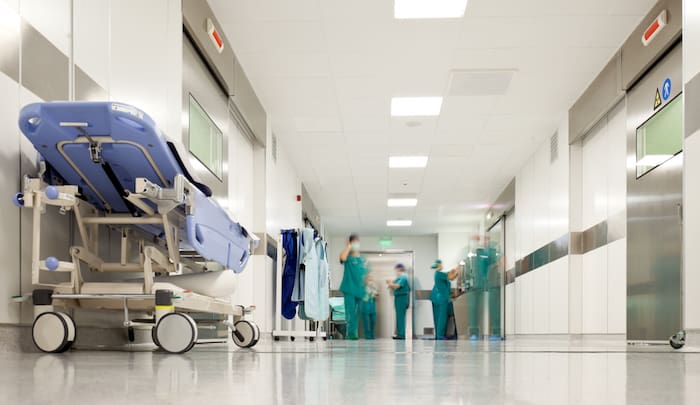By Scott Czubkowski, PE, CHC, National Director of Energy & Facility Performance, Medxcel
Hospitals run 24 hours a day, 7 days a week, 365 days a year, so it may not be all that surprising that healthcare facilities ranked in the top five energy-consuming buildings in 2012 (EIA). Healthcare facilities, including hospitals and medical office buildings (MOBs), consume significantly higher levels of energy than other types of facilities. Despite the fact that much of this energy usage is unavoidable due to being tied directly to patient care, healthcare facilities must still make concerted efforts to conserve energy and implement sustainable solutions in any way they can.
Planning, Design and Construction (PDC) teams are responsible for the oversight of all improvements to existing healthcare facilities or new construction projects. As individual healthcare facilities grow and are renovated, the PDC team continuously works to streamline efforts and ensure industry standards are being upheld. Incorporating standards and products that are energy efficient throughout this process is not only best practice, but also creates a lasting, positive impact on our environment.
Energy efficiency is often afterthought in many PDC practices. Fully integrating energy efficiency measures into new and existing buildings driving environmental stewardship goals, resulting in better quality facilities overall with lower operating costs.
Prioritizing Energy Efficiency
Keeping energy efficiency top of mind throughout every PDC process can be challenging, but by doing so, facilities are constructed to maximize energy and operational efficiencies. This saves time and money compared to when energy efficiency measures are only considered near the end of a project. Prioritizing energy coupled with sustainable practices allows for teams to include new and improved technologies, which simplifies the transition from planning, design and construction to operations. By measuring and reaching a project’s energy efficiency goals, PDC teams are able to validate project performance and standardize implementations to use in future projects.
Incorporating Sustainability in the Planning Phase
Engagement of energy efficiency during the planning phase is essential in supporting environmental stewardship goals, such as CO2 reduction measures or fuel optimization. During the planning stages, teams should examine energy consumption along the supply chain and find areas to improve. This is also a good time to explore new and emerging technologies that can further improve existing systems. By taking a 360-degree approach, facilities are able to prepare for reductions in upstream meter requirements, review demand response (and resiliency) generation needs, utility budget for post project performance and consolidate facility utility volume hedging projections.
Designing Facilities to Conserve Energy
During the design stage, IoT and data analytics that were considered in the planning phase can be carried out as measurable changes. Designing facilities to be energy efficient results in lower carbon footprints, optimizing facility energy spend and meeting sustainability objectives immediately and over a facility’s life cycle. Building a comprehensive energy program that allows teams to collaborate to validate solutions, explore new technologies, and refresh standards is key in creating a long-term impact on the environment.
Delivering on Energy Efficiency Goals during Construction
The last step in PDC is construction, the physical implementation of the planning and design process, where energy efficient sustainable solutions come to life. It’s crucial that facility’s operators ensure everything is running smoothly and environmental stewardship objectives have been successfully met. Confirming energy-saving functions were installed correctly is important in producing the intended positive impact on the environment. Over a facility’s life cycle, operators must have the resources and knowledge to maintain energy-saving assets.
Planning, design and construction and energy efficiency go hand-in-hand, making it imperative to fully integrate these best practices every step of the way. Think of the common acronym PDC as PDC+E, and keep energy at the forefront of every project. Teams nationwide continue to prioritize energy and sustainability, driving the industry forward in pursuit of a greener tomorrow, one facility at a time.
# # #
About the Author
Scott Czubkowski, PE, CHC, serves as National Director of Energy & Facility Performance for Medxcel and specializes in supply & demand portfolio management, strategic program development and facility performance for the company’s 160+ managed healthcare facilities. Medxcel provides healthcare service support products and drives in-house capabilities, savings and efficiencies for healthcare organizations that, in turn, improve the overall healing environment for patients and staff.
The Editorial Team at Healthcare Business Today is made up of skilled healthcare writers and experts, led by our managing editor, Daniel Casciato, who has over 25 years of experience in healthcare writing. Since 1998, we have produced compelling and informative content for numerous publications, establishing ourselves as a trusted resource for health and wellness information. We offer readers access to fresh health, medicine, science, and technology developments and the latest in patient news, emphasizing how these developments affect our lives.








